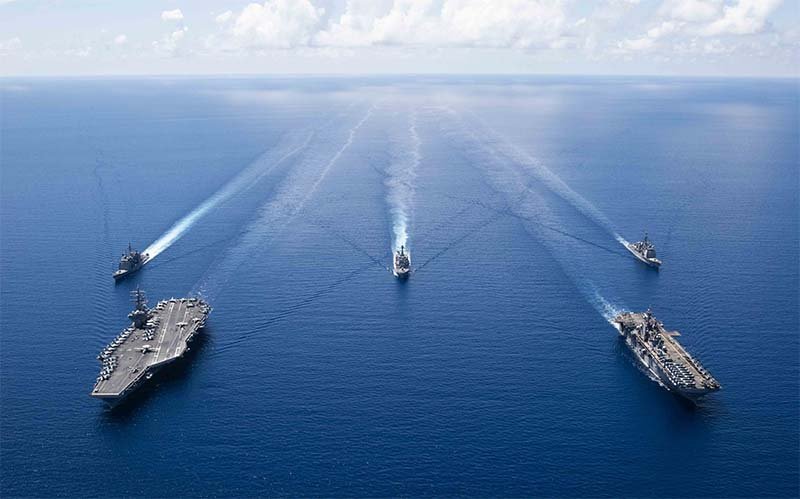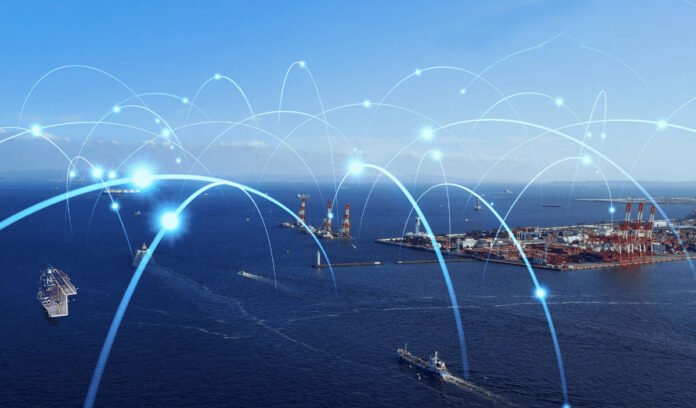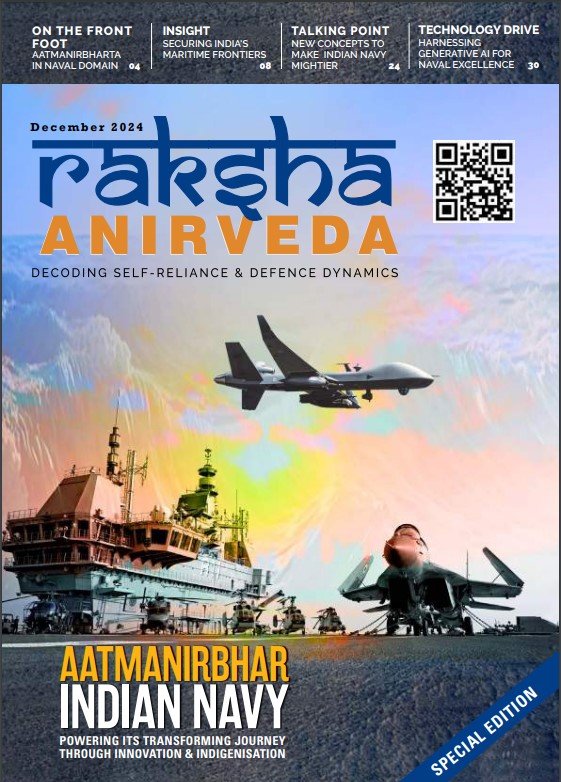The evolving nature of security challenges emerging from the maritime domain has made the term ‘Maritime Domain Awareness’ (MDA) one of the most frequently used concepts in the security discourse of the 21st century. Although not a novel concept, MDA gained significant prominence in modern security discussions following the terrorist attacks on the United States on 11 September 2001. The audacity of these attacks exposed vulnerabilities within the vast, largely unregulated ocean spaces surrounding the US, emphasising the need for enhanced awareness of the developments within the maritime domain to prevent similar threats from the sea.
MDA is a comprehensive term. The International Maritime Organisation (IMO) defines it as the ‘effective understanding of any activity associated with the maritime environment that could impact security, safety, the economy, or the environment.’ The Indian Navy’s 2015 strategy document, Ensuring Secure Seas, further elaborates on MDA, describing it as a capability that requires being fully aware of the location and intentions of all actors—whether friendly, hostile, or neutral—across the entire maritime environment and areas of interest.
MDA is multidimensional, relying on a broad array of information sources including space, air, surface, underwater, cyber, electronic, human intelligence, and visual monitoring. For MDA to be truly effective, it is essential that the information is collected, fused, analysed, and then shared with all relevant stakeholders, ensuring a coordinated response to emerging threats.
The Importance of MDA
The world’s oceans are essential to the survival and economic prosperity of mankind. Covering more than 70 per cent of the Earth’s surface, the oceans support nearly 80 per cent of the global population who live in coastal regions, while almost 90 per cent of global trade and energy resources are transported by sea. The significance of MDA, therefore, extends well beyond traditional maritime security; it encompasses an understanding of the entire maritime domain, including aspects such as marine ecology, the marine biosphere, the effects of climate change, sustainable ocean exploitation, maritime transportation, connectivity, and the development of coastal communities.
Security concerns now underpin nearly every human activity within the maritime environment, whether related to trade, energy security, environmental preservation, or the safeguarding of critical undersea infrastructure such as submarine cables and pipelines. As a result, MDA has evolved with a distinct maritime security focus. It ensures the safe and secure functioning of global maritime operations, protecting economies that are increasingly reliant on the stability of the seas.
The maritime domain has long been fraught with security challenges. Since humans first ventured into the oceans, maritime activities have shaped the rise and fall of empires, altered the course of history, and served as the conduit for global connectivity for over five millennia. Although the form may have evolved, MDA has always existed in one way or another. Early seafarers had an inherent understanding of the winds, tides, and ocean currents, which enabled them to undertake dangerous voyages across the globe. Their deep knowledge of the seas facilitated the creation of vast empires and gave rise to piracy, buccaneers, maritime crime, and naval conflicts.
In the Indo-Pacific region, MDA gained traction as a strategic necessity following notable security events such as the 9/11 attacks in the US, which brought to light the maritime vulnerabilities of even the most powerful nations, and the 26/11 Mumbai terror attacks, which similarly exposed gaps in India’s maritime security.
As time has progressed and technology has advanced, our understanding of the oceans has deepened, allowing for greater exploitation of its resources. This, however, has also brought with it an expanding array of non-traditional and transnational security challenges, which are shaping the global maritime security discourse today. The ocean, as a natural medium for global connectivity, must remain secure and stable to facilitate the uninterrupted flow of trade and energy between continents. Any disruption to the maritime order, even in far-flung regions, can have catastrophic repercussions on the global economy.
In recent years, the world has grown increasingly confrontational, with conflict hotspots emerging across the globe. These conflicts, even when restricted to specific geographic areas, have wide-reaching economic consequences. For instance, the Russia-Ukraine conflict, despite being land-based, has had a profound impact on global food security, particularly for poorer nations in the global south, due to Russia’s embargo on maritime traffic in the Black Sea. This conflict has also disrupted global supply chains, leading to inflationary pressures worldwide. Similarly, the ongoing Israel-Hamas conflict has seen Houthi forces attacking shipping in the Red Sea, prompting many shipping lines to reroute their vessels around the Cape of Good Hope. This detour adds nearly 10,000 kilometres to each journey, causing delays in cargo delivery and significantly increasing transportation costs, with severe economic implications for many nations.
Incidents like these highlight the vulnerabilities in the global maritime domain. A few years ago, the accidental grounding of the MV Ever Given in the Suez Canal forced the canal to close for several days, leading to daily economic losses of billions of dollars globally. It is clear that even minor disruptions in the maritime domain can have far-reaching economic effects.
While the defence of a nation’s territorial waters and maritime frontiers from external threats remains the core responsibility of navies worldwide, the increasingly blurred lines between traditional military conflict and non-traditional maritime threats have necessitated a broader role for naval forces. The Indian Navy’s recent counter-piracy missions, which involved safely escorting vessels through the Bab-el-Mandeb Strait and the western Indian Ocean, have been widely lauded. At one point, the Navy had deployed 12 major warships in the region to counter a resurgence of Somali piracy, a formidable effort that garnered international recognition.
The Russia-Ukraine conflict, despite being land-based, has had a profound impact on global food security, particularly for poorer nations in the global south, due to Russia’s embargo on maritime traffic in the Black Sea. This conflict has also disrupted global supply chains, leading to inflationary pressures worldwide.
This was not the first time the Indian Navy had dealt with piracy. Between 2008 and 2013, it took more than 20 navies over five years to subdue the wave of piracy originating from the Horn of Africa. Despite their lack of sophisticated equipment, young Somali pirates operating from small skiffs and armed only with Kalashnikovs managed to disrupt global trade and hold the world economy hostage. This stark asymmetry underscores the critical importance of effective MDA.
Non-traditional Maritime Security Challenges
Non-traditional maritime security challenges are a global phenomenon and span across all oceans. Local navies are expending considerable resources to tackle threats such as piracy, narcotics smuggling, gunrunning, human trafficking, illegal, unregulated, and unreported fishing (IUU), and other criminal activities. These threats differ from conventional state-on-state military conflicts and involve a range of non-state actors and criminal syndicates exploiting the vast, open, and largely unregulated ocean spaces. These challenges persist because of the enormity of the oceans and the dynamic nature of maritime zones. Given the sheer size and complexity of the oceans, it is beyond the capacity of any single country to ensure complete MDA effectively.
This realisation highlights the importance of collaboration among nations, pooling their resources through cooperative frameworks to improve MDA and enhance their ability to address these evolving threats. The maritime environment is particularly vulnerable because crime syndicates, non-state actors, and even states themselves, at times, find innovative ways to exploit the maritime domain for illicit activities. The constantly shifting nature of these threats makes MDA not only necessary but also challenging, requiring continuous adaptation to stay ahead of these illegal activities.
MDA in the Indo-Pacific
In the Indo-Pacific region, MDA gained traction as a strategic necessity following notable security events such as the 9/11 attacks in the US, which brought to light the maritime vulnerabilities of even the most powerful nations, and the 26/11 Mumbai terror attacks, which similarly exposed gaps in India’s maritime security. Additionally, the widespread piracy along the Horn of Africa, which had severely impacted global trade routes, acted as a wake-up call, leading to coordinated international efforts to improve MDA.
Several multinational frameworks were established to support the fight against piracy and enhance MDA in the western Indian Ocean. These efforts were complemented by advancements in technology, allowing for better sharing of information regarding maritime security challenges such as oil spills, IUU fishing, coastal erosion, and extreme weather events like the 2004 tsunami. These events underscored the need for a more collaborative and robust MDA infrastructure.
For instance, the European Union’s Maritime Security Centre, Horn of Africa (MSCHOA) and CRIMARIO-II (Critical Maritime Routes in the Indian Ocean) initiative have improved regional MDA. The Indian Ocean Regional Information System (IORIS), set up by CRIMARIO-II, plays a crucial role in enabling information sharing among Indian Ocean states. Similarly, other regional initiatives such as the Regional Maritime Information Fusion Centre (RMIFC) in Madagascar and the Regional Centre for Ocean Coordination (RCOC) in Seychelles focus on enhancing MDA and maritime security coordination across the western Indian Ocean.
The ongoing Israel-Hamas conflict has seen Houthi forces attacking shipping in the Red Sea, prompting many shipping lines to reroute their vessels around the Cape of Good Hope. This detour adds nearly 10,000 kilometres to each journey, causing delays in cargo delivery and significantly increasing transportation costs, with severe economic implications for many nations
Moving eastwards, India houses the Indian Ocean Region – Information Fusion Centre (IOR-IFC), while Singapore hosts an Information Fusion Centre (IFC) focused on maritime security in Southeast Asia. Several other piracy-focused initiatives like the Regional Cooperation Agreement on Combating Piracy and Armed Robbery (ReCAAP), the Shared Awareness and Deconfliction (SHADE) initiative, and the Djibouti Code of Conduct reinforce the collaborative efforts in combating non-traditional threats like piracy.
The Indo-Pacific, with its pivotal role in global trade, has become the focal point for international maritime strategies. Two-thirds of the global population resides in this region, and it accounts for over 60 per cent of the world’s GDP, with almost 50 per cent of global trade passing through its waters. Recognising its strategic importance, traditionally Euro-centric powers such as the European Union, Germany, the Netherlands, France, the UK, and Canada have articulated their own Indo-Pacific strategies, highlighting their stakes in the safety and security of maritime trade and emphasising the importance of MDA.

Indo-Pacific Maritime Domain Awareness Initiative (IPMDA)
Given the Indo-Pacific’s critical role in the global economy and the increasing complexity of security challenges, MDA has become central to the region’s security discourse. The Quadrilateral Security Dialogue (QUAD),—an informal grouping of four like-minded maritime democracies: Australia, India, Japan, and the US—introduced the Indo-Pacific Maritime Domain Awareness Initiative (IPMDA). The goal of IPMDA is to establish a comprehensive, cooperative framework for monitoring maritime activities in the region, ensuring the safety of key sea lines of communication (SLOCs), and promoting maritime cooperation among like-minded nations.
IPMDA is still in its developmental phase, but it holds the potential to substantially enhance regional MDA by integrating various information sources, platforms, and monitoring systems to counter both conventional and non-traditional threats. Its success will depend on how well the member nations can collaborate, share information, and respond to evolving threats in real-time.
The Indian Navy’s recent counter-piracy missions, which involved safely escorting vessels through the Bab-el-Mandeb Strait and the western Indian Ocean, have been widely lauded. At one point, the Navy had deployed 12 major warships in the region to counter a resurgence of Somali piracy, a formidable effort that garnered international recognition.
China’s Maritime Ambitions and Grey Zone Tactics
China’s rise as a global maritime power has added another dimension to the maritime security challenges in the Indo-Pacific. China’s strategic ambitions include altering the rules-based international order, particularly in its immediate maritime periphery. Its aggressive maritime strategy, including brinkmanship, the use of “grey zone” tactics (activities that fall between traditional military confrontation and peace, such as the deployment of fishing militias or coastguard vessels), and intimidation of smaller neighbouring states, have increased tensions in the region.
The South China Sea and Taiwan remain particularly sensitive areas for China, and any miscalculation in these contested waters could escalate into broader conflict. Moreover, China’s efforts to expand its naval reach beyond the western Pacific and into the Indian Ocean indicate its desire to project maritime power on a global scale. Through its vast network of strategically located ports, infrastructure projects, and bases, China is positioning itself to influence maritime dynamics across the Indo-Pacific and even gain access to the Atlantic Ocean.
These developments underscore the need for enhanced MDA to monitor and respond to the changing geopolitical landscape in the Indo-Pacific. The actions of major powers like China can have far-reaching consequences for global trade, regional security, and the stability of the maritime order.
-The author is Vice President, Indian Maritime Foundation. The views expressed are personal and do not necessarily carry the views of Raksha Anirveda






